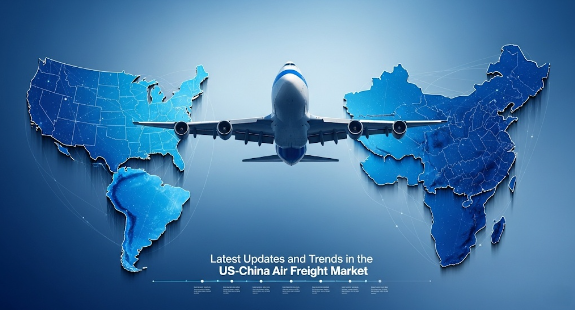Customs Compliance 2025: Avoiding New Penalties When Shipping to the USA
Release time:
2025-06-26
Stay Ahead of Changing Regulations and Ensure Smooth Shipments to the US
In 2025, shipping goods to the United States from China requires navigating a constantly evolving landscape of customs regulations. With new penalties and stricter enforcement on the horizon, it’s more important than ever to stay updated on compliance rules.
In this blog, we’ll cover the key customs compliance issues you’ll face when shipping to the USA, how to avoid penalties, and how to ensure your shipments are compliant in 2025 and beyond.
1. Key Customs Changes in 2025
The U.S. Customs and Border Protection (CBP) has been ramping up efforts to improve supply chain security, streamline the customs process, and ensure compliance with trade laws. Some key changes in 2025 include:
🔹 Increased Scrutiny on Imports
Customs officers are now more focused on verifying the origin of products, especially with the ongoing trade tensions and the push for “Buy American” initiatives.
🔹 New Tariff Regulations
Changes to Section 301 tariffs affect products from China. This includes updates to which items are subject to duties and changes in tariff rates for different categories.
🔹 Stricter Enforcement of Importer Security Filing (ISF)
The ISF (10+2 rule) requires more detailed and timely filing of import data, including product description, manufacturer details, and country of origin. Non-compliance can result in delays or penalties.
🔹 Environmental Impact Reporting
The U.S. is introducing new environmental impact regulations for certain imports. As of 2025, you may need to provide evidence that your goods meet environmental standards, particularly for chemicals or electronics.
2. Common Customs Compliance Issues to Avoid
When shipping to the U.S., avoiding penalties starts with understanding the common mistakes that can lead to delays, fines, or confiscation of goods.
⚠️ 1. Incorrect or Incomplete Documentation
The Bill of Lading, Invoice, and Packing List must match the HS Code, Product Description, and Quantity. Any discrepancies can trigger delays and fines.
Tip: Ensure all documents are accurate and submitted on time. Double-check all descriptions, classifications, and values.
⚠️ 2. Misclassification of Goods
If goods are misclassified, you could face severe penalties or even seizure of the shipment. This includes not properly assigning an HS Code (Harmonized System) to your products.
Tip: Work with a customs broker or logistics partner to ensure products are classified correctly and pay the correct duties.
⚠️ 3. Failure to Declare the Right Value
Declaring the wrong value of your goods (e.g., undervaluing) can lead to fines. It’s essential to declare the accurate value for both customs duties and the customs clearance process.
Tip: Make sure you are aware of any updates to the value-added tax (VAT), customs duties, and fees to avoid over- or under-declaring.
⚠️ 4. Lack of Proper Labeling
Mislabeling or failing to meet the U.S. FDA or Consumer Product Safety Commission (CPSC) labeling requirements can lead to goods being rejected at the border.
Tip: Review product-specific labeling rules for electronic products, food, and toys before shipping.
3. Avoiding Penalties: Best Practices for Compliance
📦 Work with a Reliable Freight Forwarder
A trusted freight forwarder will guide you through the complexities of import regulations. Many also offer customs brokerage services, helping you ensure your shipments comply with the latest rules.
📝 Ensure Proper Documentation
Accurate documentation is key to clearing goods through U.S. Customs. Always ensure the following are in place:
Commercial Invoice with full product description and HS Code
Packing List and Bill of Lading
Import Permit (if applicable)
Certificate of Origin
FDA and CPSC labels (if applicable)
💡 Use a Customs Broker
A customs broker is a licensed expert in U.S. import laws and can ensure that your shipment meets all regulations. They handle the details of your customs clearance process and prevent delays or fines.
🔍 Stay Informed on Regulatory Changes
Keep up to date on customs changes through U.S. Customs and Border Protection (CBP) and related organizations. Subscribe to newsletters and attend webinars on customs compliance.
🛠 Use Technology to Streamline Processes
Using customs compliance software or AI-powered tools can help automate document filing, HS Code classification, and tariff calculations, reducing the chances of human error.
4. Why Choose Passionship Logistics for Your U.S. Shipments?
At Passionship Logistics, we offer:
✅ DDP Shipping – All-inclusive service with customs clearance and delivery to your U.S. address.
✅ Accurate HS Code Classification – We ensure your products are properly classified to avoid penalties.
✅ Experienced Customs Brokerage – Our team helps navigate complex customs regulations.
✅ Fast and Reliable Service – We handle your shipments with speed and care, ensuring smooth clearance.
5. Final Thoughts
Customs compliance in 2025 is more challenging than ever, but it’s also an opportunity to gain an edge by staying ahead of new rules. Avoiding penalties is all about accuracy, documentation, and expert guidance.
📦 Ready to ship to the USA with confidence?
👉 Get a free quote from Passionship Logistics today










